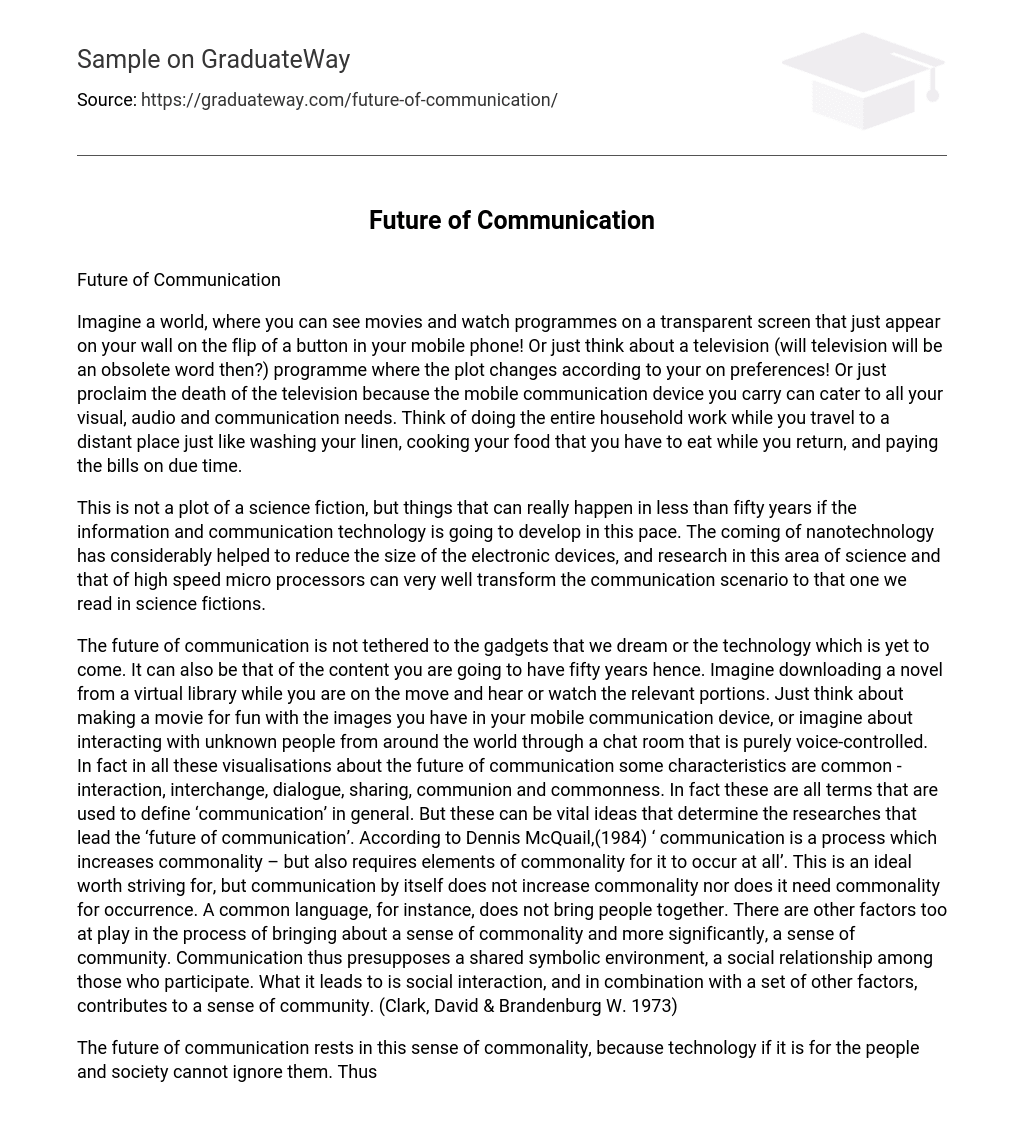Imagine a world, where you can see movies and watch programmes on a transparent screen that just appear on your wall on the flip of a button in your mobile phone! Or just think about a television (will television will be an obsolete word then?) programme where the plot changes according to your on preferences! Or just proclaim the death of the television because the mobile communication device you carry can cater to all your visual, audio and communication needs. Think of doing the entire household work while you travel to a distant place just like washing your linen, cooking your food that you have to eat while you return, and paying the bills on due time.
This is not a plot of a science fiction, but things that can really happen in less than fifty years if the information and communication technology is going to develop in this pace. The coming of nanotechnology has considerably helped to reduce the size of the electronic devices, and research in this area of science and that of high speed micro processors can very well transform the communication scenario to that one we read in science fictions.
The future of communication is not tethered to the gadgets that we dream or the technology which is yet to come. It can also be that of the content you are going to have fifty years hence. Imagine downloading a novel from a virtual library while you are on the move and hear or watch the relevant portions. Just think about making a movie for fun with the images you have in your mobile communication device, or imagine about interacting with unknown people from around the world through a chat room that is purely voice-controlled. In fact in all these visualisations about the future of communication some characteristics are common – interaction, interchange, dialogue, sharing, communion and commonness. In fact these are all terms that are used to define ‘communication’ in general. But these can be vital ideas that determine the researches that lead the ‘future of communication’. According to Dennis McQuail,(1984) ‘ communication is a process which increases commonality – but also requires elements of commonality for it to occur at all’. This is an ideal worth striving for, but communication by itself does not increase commonality nor does it need commonality for occurrence. A common language, for instance, does not bring people together. There are other factors too at play in the process of bringing about a sense of commonality and more significantly, a sense of community. Communication thus presupposes a shared symbolic environment, a social relationship among those who participate. What it leads to is social interaction, and in combination with a set of other factors, contributes to a sense of community. (Clark, David & Brandenburg W. 1973)
The future of communication rests in this sense of commonality, because technology if it is for the people and society cannot ignore them. Thus the thrust of communications would be to develop gadgets and technologies that contribute a sense of community among the human race. W.S. Cardon,a leading exponent of kinesics, the science of body language stresses that interaction within a culture is governed not so much by language, but by ‘body synthesizers’ set in motion almost immediately after birth and thereafter conditioned by culture.‘Communication, therefore is not a matter of isolated entities sending discrete messages back and forth, a process of mutual participation in a common structure of rhythmic patterns by all members of a culture’. (Fiske J.,1982, p.111).
Thus it can be concluded that the future communication gadgets would never be mere communicating devices, but they would also be ‘culture’ producing machines as well.
References
Fiske, J. (1982). Introduction to communication studies. London: Methuen.
Mc Quail D.(1986). Mass communication theory: An introduction. London: Sage.
Clark, David & Brandenburg W. (1973) You and media: Mass communication and society. London: Canfield Press.





